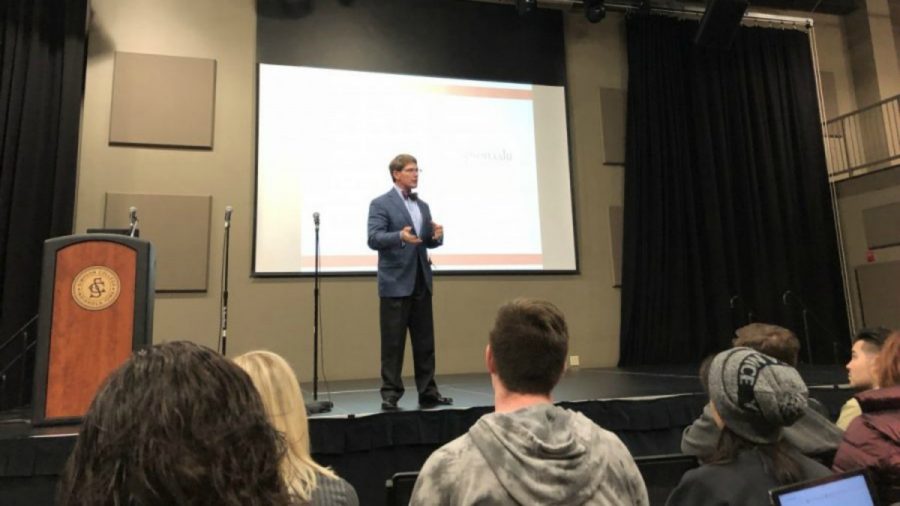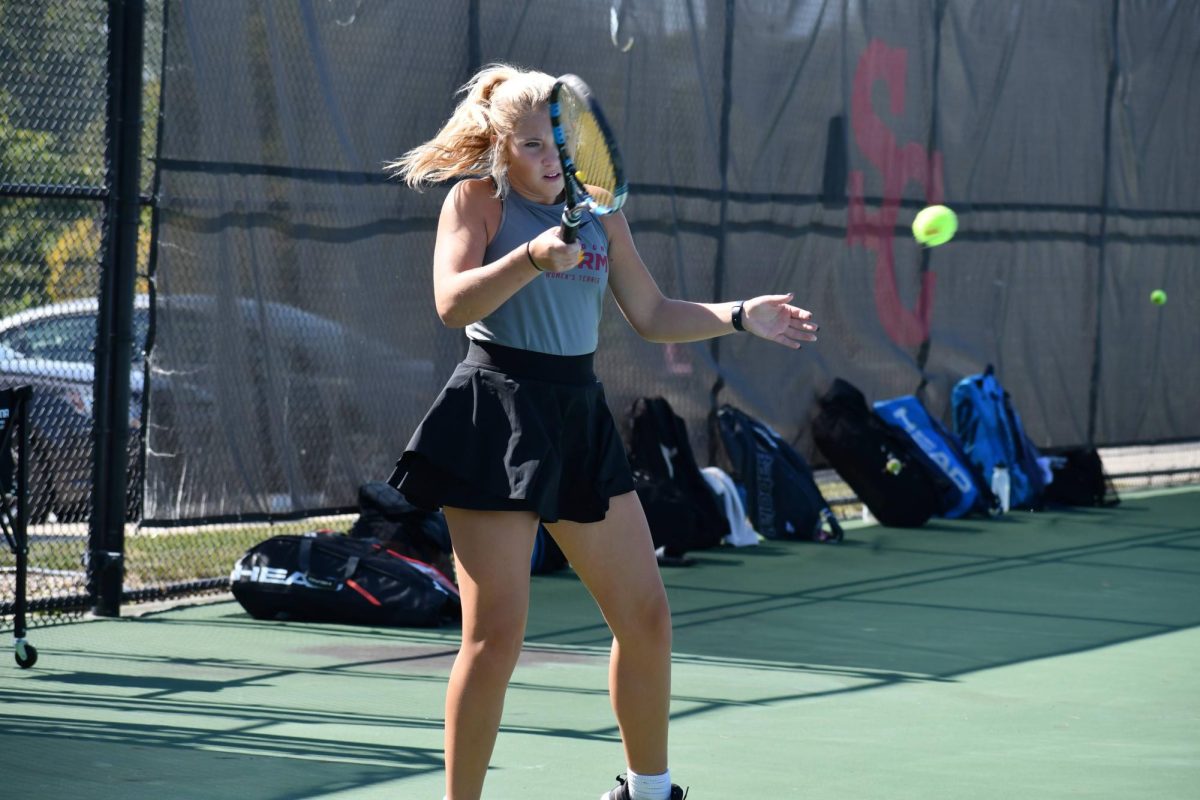Making the cut: Simmons explains process of program eliminations
January 25, 2018
INDIANOLA, Iowa — In a forum on Wednesday afternoon in the Principal Black Box, Simpson College President Jay Simmons gave information and answered questions related to the college’s program prioritization, the process by which Simpson will decide which academic programs to cut.
Simmons dove into the topic on everyone’s minds. To give context, he gave specific national numbers showing a decline in traditional enrollment. According to the information given, undergraduate enrollment has declined by 224,000 students in 39 states. Seven out of 10 states with the largest decline were in the Midwest.
Specifically, in the past five years, Simpson has seen a 16.58 percent decrease in the number of students. In 2013, 1,773 students were in attendance compared to the 1,479 students enrolled in fall 2017.
“The projections for higher education over the next several years in terms of enrollments are not promising,” Simmons said. “We will continue to see declines in baccalaureate degree pursuit in colleges and universities at least until about 2030 if these trends hold.”
RELATED: Go big or go home: Private colleges fight waning enrollment
Beginning in May 2017, a plan looking at program demand was set into place to gauge enrollment and engagement in specific departments. A steering committee, made up of representatives from different areas of the college, was responsible for ranking each department based on how well it’s meeting the needs of the college.
“We are doing this work because higher education is in a period of rapid transition in the United States,” Simmons said. “There are fewer of you enrolling in colleges and universities at all levels. We have to respond to that change in conditions.”
He promised current students would be given the opportunity to finish their declared degree. The college plans to work with individual students in programs experiencing a “teach-out” where they create a plan so they can complete their degree. To be grandfathered in, freshmen must declare their major, with the help of their academic adviser, to ensure the program they choose won’t be facing severe cuts.
Nonacademic programs also face potential cuts.
“We’ll take a look at athletic programs and others such as CAB. Basically, anything that doesn’t carry academic credit,” Simmons said.
First, departments were to complete rubrics given by the Prioritization Committee during the fall 2017 semester. Those rubrics were reviewed by the committee in early January, and are currently being revised. The program prioritization is set for February with Simmons and his cabinet who will hold hearings from the faculty committees in March. Finally, the board of trustees and Simmons will approve the process.
Academic Dean Kent Eaton described the change as a type of motivation, in that the world is constantly changing, so the departments at Simpson are constantly changing.
“I really hadn’t known a lot about this going into the forum, but it was really nice of them to take the time to talk to us and tell us what this is about and how they’re attacking it,” sophomore Brenna Yeutsy said.
As a member of the Simpson swim team and a member of the Pi Beta Phi sorority, Yeutsy expressed concerns for the cutting of nonacademic programs.
“They have a plan for the academics,” she said. “I think what they don’t necessarily know at this point is past the academics when they get into all the campus organizations and the athletics. Those cuts are going to be hard. I think those cuts are going to impact the students more.”
Any proposed cuts made to academic and nonacademic programs alike will be made over a course of two to three years.
This program prioritization is not to be taken lightly.
The changes made to the college in the next couple years are going to be influential and substantial. Because of this, questions do arise and students do worry. Additional questions are to be sent to priorityquestions@simpson.edu, where those on the prioritization committee will answer them individually.







